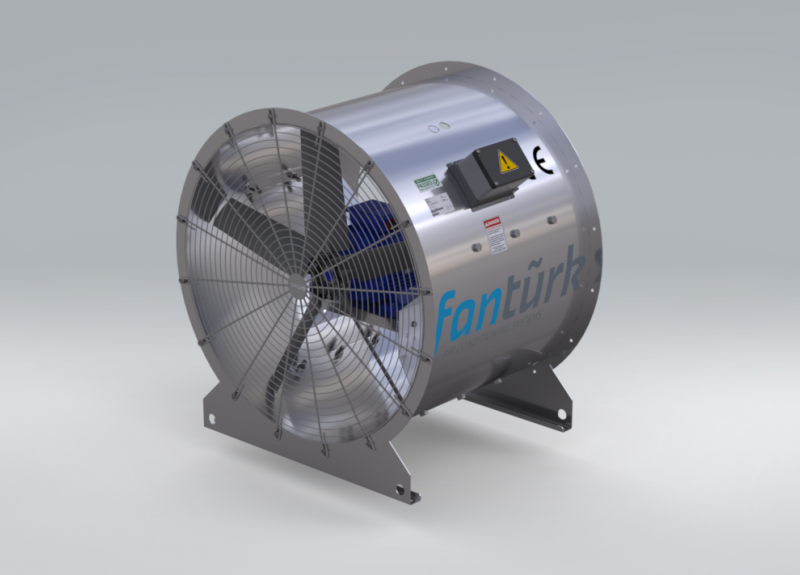
Elevator pressurization fan s are an essential part of the safety systems in high-rise buildings. They work by maintaining a positive pressure in elevator shafts during an emergency to prevent smoke and fire from entering and spreading through the building. In this article, we’ll explore what elevator pressurization fans are, how they work, and the benefits they offer. We’ll also examine the different applications of elevator pressurization fans in high-rise buildings.
What are Elevator Pressurization Fans?
Elevator pressurization fans, also known as elevator shaft pressurization systems, are designed to maintain a positive pressure in elevator shafts during an emergency, such as a fire. These fans prevent smoke and fire from entering the elevator shaft and spreading throughout the building by creating a barrier of pressurized air.

Elevator pressurization fans work by drawing air from the building’s common areas and forcing it into the elevator shaft. This creates a positive pressure that prevents smoke and fire from entering the shaft and spreading through the building. The pressurized air also helps to keep the elevator doors closed, further preventing the spread of smoke and fire.
How do Elevator Pressurization Fans Work?
Elevator pressurization fans work by creating a positive pressure in the elevator shafts during an emergency. This positive pressure prevents smoke and fire from entering the shafts and spreading throughout the building.
The pressurization system consists of a fan or multiple fans, a control system, and a ductwork system. The fan draws air from the building’s common areas, such as hallways and lobbies, and forces it into the elevator shaft through ductwork. The control system regulates the fan speed to maintain a constant pressure in the shafts, while the ductwork system distributes the pressurized air evenly throughout the shaft.
During an emergency, the elevator pressurization system is activated automatically, either by a smoke detector or manually by building personnel. The pressurized air creates a barrier that prevents smoke and fire from entering the elevator shaft and spreading through the building.
Benefits of Elevator Pressurization Fans
Elevator pressurization fans offer a range of benefits, including:
Increased safety: Elevator pressurization fans play a critical role in ensuring the safety of building occupants during an emergency, preventing smoke and fire from entering and spreading through the building.
Compliance with building codes: Many building codes require the installation of elevator pressurization systems in high-rise buildings to ensure the safety of occupants during an emergency.
Cost-effective: Installing an elevator pressurization system is a cost-effective way to comply with building codes and ensure the safety of building occupants.
Energy-efficient: Elevator pressurization fans are designed to operate efficiently and consume less energy than other types of fans, making them an energy-efficient solution for high-rise buildings.
Applications of Elevator Pressurization Fans
Elevator pressurization fans are primarily used in high-rise buildings to maintain a positive pressure in elevator shafts during an emergency. They are required by many building codes and are an essential part of the safety systems in high-rise buildings.
In addition to their primary application, elevator pressurization fans can also be used in other applications, such as:
Smoke control systems: Elevator pressurization fans can be used as part of a smoke control system to prevent smoke and fire from spreading through a building.
HVAC systems: Elevator pressurization fans can be integrated with HVAC systems to distribute conditioned air evenly throughout a building.
Industrial applications: Elevator pressurization fans can be used in industrial applications where positive pressure is required, such as clean rooms or manufacturing facilities.
Choosing the Right Elevator Pressurization Fan
When selecting an elevator pressurization fan, it’s important to consider factors such as the size of the building, the number of elevator shafts, and the required airflow rate. The airflow rate is determined by the size and number of fans required to maintain a positive pressure in the elevator shafts during an emergency.
It’s also important to consider the type of control system used to regulate the fan speed. Some systems use pressure sensors to regulate the fan speed, while others use a variable frequency drive (VFD) to adjust the fan speed based on the pressure in the elevator shaft.
Additionally, the location of the elevator pressurization fans is critical. They should be located in a separate mechanical room away from the elevator shafts to prevent damage in the event of a fire. The fan location should also provide easy access for maintenance and inspection.
Conclusion
Elevator pressurization fans are an essential part of the safety systems in high-rise buildings. They maintain a positive pressure in elevator shafts during an emergency, preventing smoke and fire from entering and spreading through the building. With their increased safety, compliance with building codes, cost-effectiveness, and energy efficiency, elevator pressurization fans are a critical component of many high-rise buildings.
When selecting an elevator pressurization fan, it’s important to consider factors such as the size of the building, the number of elevator shafts, and the required airflow rate. Choosing the right fan and control system is essential to ensure maximum efficiency and performance.
With their ability to maintain a positive pressure in elevator shafts and prevent the spread of smoke and fire, elevator pressurization fans are a crucial component of the safety systems in high-rise buildings. Their importance should not be underestimated, and building owners and managers should ensure that they are properly installed, maintained, and inspected to ensure the safety of building occupants.
